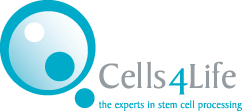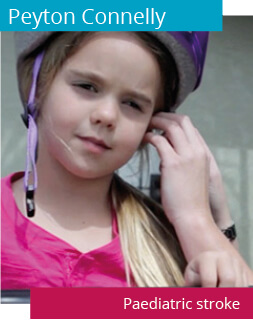Cord Blood Stem Cells
Treat Paediatric Stroke
Shelley Connelly had a fantastic pregnancy with her daughter, Peyton. Nevertheless, Shelley decided to bank her daughter’s cord blood. Unfortunately, days before her first birthday Peyton became ill; when Shelley went to stand Peyton up in her cot she “just fell over”. Peyton had a very large tumour which needed to be removed immediately. The doctors then broke further devastating news that Peyton had suffered a massive stroke and that there was nothing they could do.
The lasting effects of paediatric stroke can be life-changing especially in those who develop a long term brain injury or physical disability. Some, but not all, survivors of a stroke during childhood or perinatal stroke may develop cerebral palsy, visual problems, hearing problems, speech difficulties, language difficulties, epilepsy and learning difficulties to name but a few.[2] Shelley realised that because she had banked Peyton’s cord blood she could have options available to her. Peyton was able to access an experimental therapy and had her cord blood stem cells infused. Since the infusion she no longer needs speech therapy. “100 per cent, she’s mentally fine”, said Shelley.
“It’s amazing. If this is what we can achieve with cord blood reinfusion I want it available to more people; I want it available to anyone that wants it”, said Shelley speaking about cord blood.
Strokes occur in up to 13 per 100,000 children in the UK. It is thought there are around 400 childhood strokes a year in the UK. 1 in 4,000 babies have a stroke at birth worldwide – this translates to around 200 strokes in babies a year in the UK alone.
[3]
Cells4Life Experience: Brain Injuries
In 2012 Cells4Life released whole blood samples, sufficient for two treatments, to Duke University for the treatment of a cerebral injury. The patient has cord blood remaining in storage with Cells4Life for further treatments.
In 2015 Cells4Life released 10ml of whole blood to Duke University for the treatment of an acquired brain injury. The majority of the patient’s cord blood remains in storage at Cells4Life.
READ MORE – STROKE



